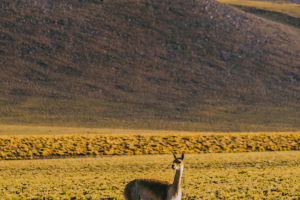The cheetah is the fastest land animal in the world. It is mainly found in the open grasslands of Africa and parts of Southwest Asia.
The cheetah is notable for its incredible speed and unique physiological features and lifestyle, making it a key subject in animal and ecological studies.
1. Physical Characteristics
The cheetah’s streamlined body reduces air resistance while running. It is more slender than other large cats, with a broad chest, powerful hind legs, and long, thin limbs, all well-suited for high-speed running.
Its head is small and rounded, and its nose is pointed, which helps reduce wind resistance. The cheetah’s fur is yellowish-brown with black spots; these spots not only serve as camouflage but may also help the cheetah maintain direction while running at high speeds.
2. Running Ability
The cheetah’s running ability is its most famous feature. It can accelerate from a standstill to 100 kilometers per hour (about 62 miles per hour) in just a few seconds and maintain this speed for 20 to 30 seconds. This incredible speed is due to its powerful hind leg muscles, flexible spine, and special respiratory system.
The cheetah's spine can flex significantly during running, allowing each stride to extend to its maximum. Additionally, the cheetah has a unique respiratory system that efficiently supplies oxygen at high speeds, preventing excessive heat buildup.
3. Feeding and Hunting
The cheetah primarily feeds on small to medium-sized herbivores such as gazelles, impalas, and rabbits. It relies on its remarkable speed and sudden bursts of acceleration to capture prey. Cheetahs typically approach their prey quietly from a distance, and once they are close enough, they launch a high-speed chase.
Their excellent eyesight allows them to spot prey from afar, which is crucial for successful hunting.
4. Reproduction and Social Behavior
The cheetah’s reproductive behavior differs from that of other large cats. Female cheetahs usually live alone and mate with males only during the breeding season. The gestation period is about 90 to 95 days, and the female typically gives birth to 3 to 5 cubs.
Newborn cubs are very vulnerable, and the mother protects them as much as possible, providing ample food in the early stages. Cubs rely on their mother’s care for the first few months before gradually learning hunting and survival skills.
Cheetahs exhibit some social behavior, though they spend most of their time alone. Adult male cheetahs sometimes form small groups known as "coalitions," consisting of several males. This social structure helps them cooperate during hunting, increasing their success rate. Female cheetahs are more likely to live alone, except during the breeding season or while rearing young.
5. Conservation Status
The cheetah faces several survival threats. Habitat loss and human activities are major threats. Land clearing, agricultural development, and illegal hunting have fragmented cheetah habitats, continuously shrinking their living environment.
Additionally, the cheetah's low genetic diversity makes it less adaptable to diseases and environmental changes, further increasing its survival risk.
To protect cheetahs, many organizations and institutions are actively involved in conservation efforts, including establishing protected areas, conducting anti-poaching activities, and raising public awareness about the threats to cheetah survival. Researchers also continuously study cheetah behavior and ecology to develop effective conservation strategies.
Summary
The cheetah is a marvel of the natural world with its astounding speed, unique physiological structure, and hunting strategies. Its conservation status reflects the impact of human activities on the environment and reminds us of the need to balance modernization with environmental protection.
Only through sustained effort and cooperation can we ensure the future of cheetahs and other wildlife.


